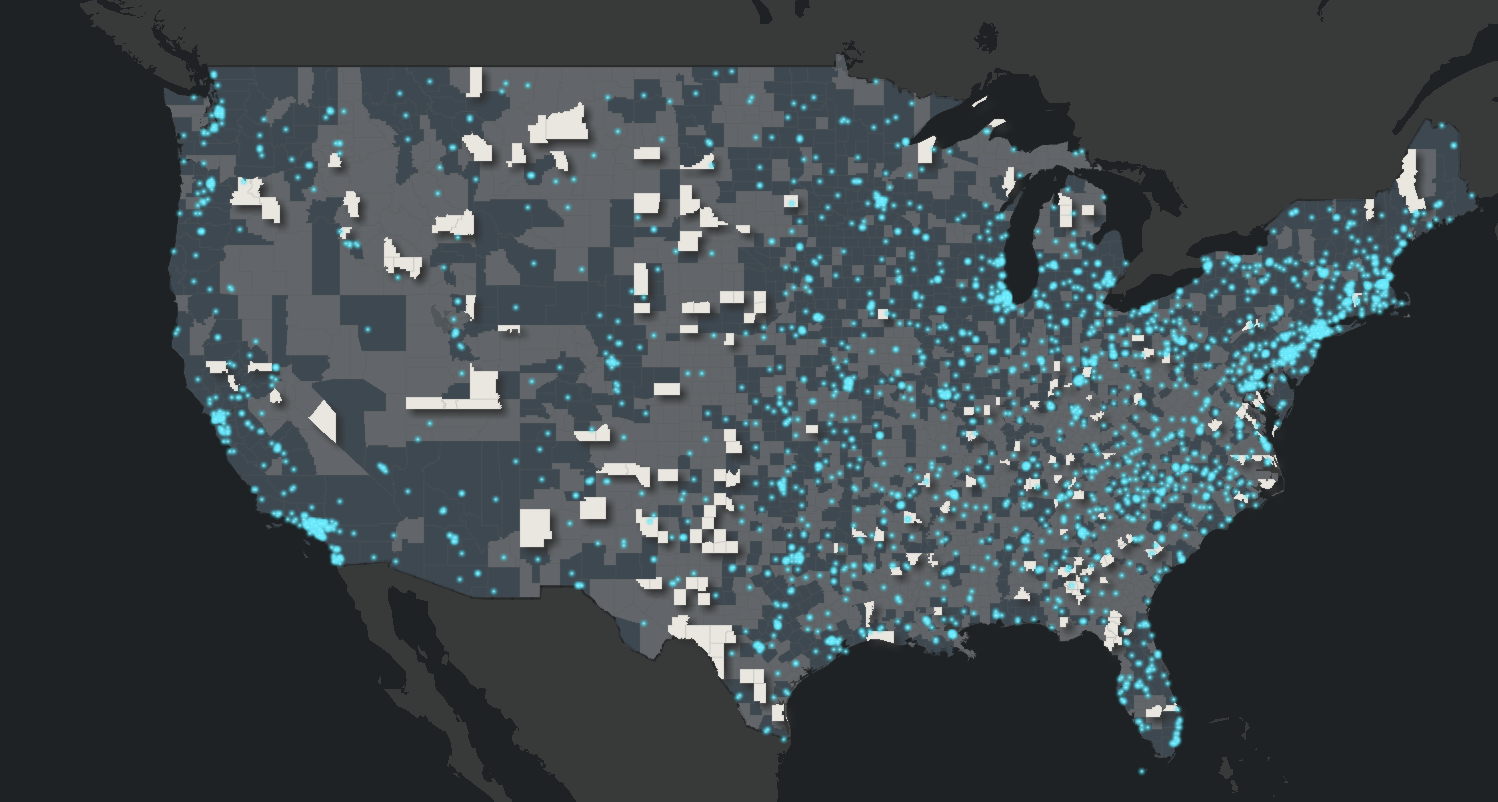This map shows that there are 1316 universities and colleges located in or adjacent to counties with one or zero newspapers. We limited this to four year colleges with enrollment above 500 students.
This map shows the 136 colleges and universities currently running university led reporting programs or about to start one and 149 more that have reached out to CCN to learn more.
According to Northwestern, 228 counties are at risk of losing their one news source. The universities in or near those counties have an opportunity to step in. This map overlays news deserts with the colleges and universities near them without filtering by enrollment. Click to view the map in a new tab.
Statewide legislative and political coverage are a critical gap that students can help fill. As state legislative coverage has declined, university-led reporting programs are growing. About 10 percent of statehouse reporters are students working under the direction of university-funded professional reporters and editors. Twenty programs exist today in 19 states (Florida has two) and CCN recently funded 20 faculty statehouse champions in 20 additional states, to bring the total to 40. There are another 400 colleges and universities located 15 miles from state capitals across the US.
Universities can provide resources, giving students applied learning experiences and support struggling local news platforms. Students, dedicated faculty, physical spaces and access to alumni dollars are all critical contributions that universities can make to these efforts. This chart shows college endowments as one measure of support from alumni to college campuses.

